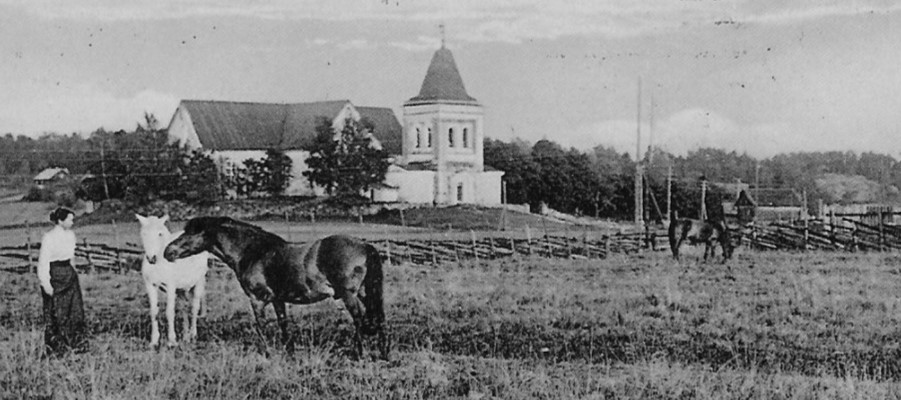Kirkkonummi is a municipality with over 41,000 residents in Western Uusimaa. The neighbouring municipalities of Kirkkonummi are Espoo, Vihti and Siuntio as well as Inkoo in the sea area. The municipality has three larger residential areas: Kirkkonummi city centre, Masala and Veikkola. Kirkkonummi also has several smaller villages.
The Upinniemi Garrison is also located in the municipality. It is a military area closed to unauthorised visitors.
Kirkkonummi has 86 lakes and 145 km of seashore. There are about 900 islands in the municipality. As less than 10% of the area is governed by the local development plan, there are various beautiful nature areas, recreational areas and nature reserves in the municipality.
Kirkkonummi is a bilingual municipality. Approximately 74% of the population speak Finnish, 15% speak Swedish. The next largest language groups are Estonian, Russian, Albanian and English. . https://kirkkonummi.fi/kirkkonumminyt/
Kirkkonummi has a Finnish-speaking https://www.kirkkonummenseurakunnat.fi/ and a Swedish-speaking https://www.kyrkslattsforsamlingar.fi/ Lutheran parish. The parishes also offer a variety of non-religious services for people belonging to other religious communities.
In addition to Lutheran parishes, the Pokrova Orthodox monastery and church are located in Kirkkonummi. https://pokrova.fi/ .
Other religious communities and parishes also operate in the municipality https://uskonnot.fi/?s=kirkkonummi&id=2540 .
Learn more about Kirkkonummi and its residents in the Finnish-language documentary series Matka kirkkonummelaisuuteen.
Political decision-making and advocacy
In Kirkkonummi, the local decision-making body is the municipal council, which consists of 51 members elected through municipal elections. The municipal council elects a local executive from among its members. The local executive prepares decisions for the council to decide on and ensures that the decisions made by the council are implemented.
The municipality also has municipal committees and other political bodies. The agendas and minutes of all of these can be found on the municipality’s website.
http://kirkkonummi.oncloudos.com/cgi/DREQUEST.PHP?page=meeting_frames
You can influence municipal decision-making by giving feedback to the municipality or by submitting a local resident’s initiative. You can also participate in various associations through which you can influence political decision-making.
Development of Kirkkonummi
Kirkkonummi is constantly growing and developing. New residential and business areas are planned and built in different parts of the municipality. Information on new construction projects and residential areas can be found on the municipality’s website. https://www.kirkkonummi.fi/nahtavana-nyt-ja-uudet-hankkeet
Transport in Kirkkonummi
Kirkkonummi is located within easy reach of the Helsinki Metropolitan Area. The distance from the centre of Kirkkonummi to Helsinki is about 30 km, and the train journey from the centre of Kirkkonummi to Helsinki Central Station takes about 45 minutes. The train journey to Helsinki-Vantaa Airport takes 1 hour and 15 minutes. The journey to Turku by train along the coastal line takes 1h 20 min at its shortest.
Kirkkonummi is a member of the HSL Helsinki Region Transport (HSL), which organises public transport in the Helsinki Metropolitan Area. You can search for information on routes and timetables on the Reittiopas.fi website.
In public transport, you can pay for the trip using the HSL application or a travel card. Many shops and kiosks also sell tickets. You can also buy a ticket from a ticket machine. Tickets cannot be purchased in cash from the driver.
The price of travel depends on the length of the trip. If you travel a lot, a season ticket will be cheaper than single tickets. https://www.hsl.fi/en/tickets-and-fares
History of Kirkkonummi
Kirkkonummi has been inhabited for 9 000 years already. The first mention of Kirkkonummi is in a Latin document dated 21 March 1330. The oldest building in Kirkkonummi, the stone church in the centre, was completed in the 1400s. The medieval King’s Road between Turku and Vyborg has passed through Kirkkonummi and influenced local life.
Maritime traffic in the narrowest part of the Gulf of Finland from Porkkala to Estonia has also been busy. The first written mention of Porkkala is in the 13th century sailing guide of Valdemar II Valdemarsen, the King of Denmark.
Kirkkonummi has been used for farming and food has been transported from there to Helsinki. When steamship traffic began in the late 19th century, the residents of Helsinki built various summer houses in Kirkkonummi.
The Second World War had a great impact on life in Kirkkonummi. In the peace agreement with the Soviet Union, an agreement was made to rent the Porkkala region for 50 years for use as a Soviet military base. One third of Kirkkonummi, half of Siuntio and the entire municipality of Degerby were transferred to the Soviet Union and the entire population was evacuated. However, the rental period eventually only lasted from 1944 to 1956.
When the area was returned to Finland, many new people moved to Kirkkonummi and industrialisation began. Kirkkonummi continues to grow strongly. Since year 1980, the population of Kirkkonummi has doubled.
You can find out more about the history of Kirkkonummi on the website of the municipality of Kirkkonummi. https://www.kirkkonummi.fi/paikallishistoriaa-kulttuuri
Attractions in Kirkkonummi
Kirkkonummi has 77 nature reserves which are used for protecting plant and animal species and different habitats. There are also great nature destinations here.
The Jugend-style villas of Hvitträsk and Villa Hvittorp on the shore of Lake Vitträsk are the finest and most famous of the old villas. Hvitträsk serves as a museum and Villa Hvittorp is the course centre of Espoo parishes.
Other buildings of architectural interest include the old stone church built in the 1400s in the centre of Kirkkonummi and, located next to it, Kirkkonummi’s library Fyyri, completed in 2020.
In the Ragvalds museum area, you can explore the traditional farm and its yard as well as the traditional landscape, nature trail and plant garden.
Children are likely to be interested in the Rehndal farmyard, where you can pet different animals. https://www.rehndahl.fi/
Kirkkonummi as an area
View the map of Kirkkonummi at https://kirkkonummi.karttatiimi.fi/#
The checked pattern on the left side of the map allows you to explore different views and different map materials.


